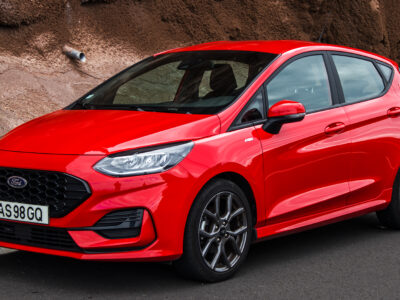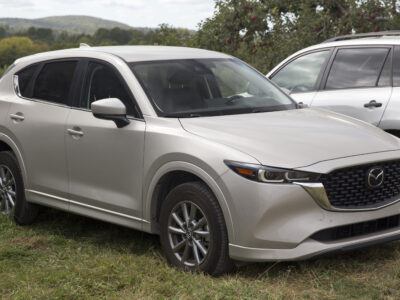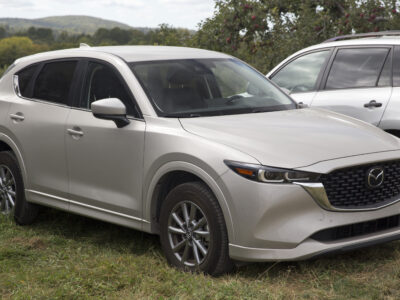
Honda HR-V vs Toyota RAV4: Which SUV Is the Better Buy in 2025?

When it comes to compact SUVs, few names command as much respect as the Honda HR-V and the Toyota RAV4. Both represent dependability, efficiency, and everyday versatility — yet they cater to slightly different drivers. In this in-depth comparison, we explore every key difference, from engine performance to fuel economy, interior space, technology, and ownership costs, helping you decide which SUV deserves your driveway in 2025.
- Overview: Honda HR-V and Toyota RAV4 in the U.S. Market
- Performance and Engine Specs
- Fuel Economy: Saving More at the Pump
- Interior Comfort and Space
- Technology and Infotainment
- Safety and Driver Assistance
- Ride Quality and Handling
- Dimensions and Ground Clearance
- Pricing and Trim Levels
- Towing and Capability
- Maintenance and Reliability
- Ownership and Resale Value
- Verdict: Which SUV Should You Choose?
Overview: Honda HR-V and Toyota RAV4 in the U.S. Market
The Honda HR-V is Honda’s entry-level crossover, positioned below the CR-V. It’s compact, practical, and efficient, making it ideal for urban drivers seeking comfort and reliability.
The Toyota RAV4, meanwhile, has evolved into a benchmark for the compact SUV class — larger, more powerful, and available with multiple powertrains, including hybrid and plug-in hybrid variants.
| Specification | Honda HR-V | Toyota RAV4 |
|---|---|---|
| Vehicle Type | Subcompact SUV | Compact SUV |
| Base Engine | 2.0L 4-cylinder | 2.5L 4-cylinder |
| Transmission | CVT | 8-speed automatic / Hybrid CVT |
| Drivetrain | FWD / AWD | FWD / AWD |
| Fuel Economy (Combined) | 28 MPG | 30–40 MPG (depending on variant) |
| Starting Price (U.S.) | ~$25,100 | ~$28,500 |
| Cargo Capacity | 24.4 cu. ft. (up to 55.1 cu. ft.) | 37.6 cu. ft. (up to 69.8 cu. ft.) |
Performance and Engine Specs
Honda HR-V: Efficiency Over Power
The U.S. version of the HR-V uses a 2.0-liter naturally aspirated four-cylinder delivering 158 horsepower and 138 lb-ft of torque. It’s paired with a continuously variable transmission (CVT) tuned for smoothness rather than sportiness. The HR-V accelerates from 0 to 60 mph in about 9.4 seconds, making it suitable for city commutes and light highway driving.
Toyota RAV4: Power and Versatility
The RAV4’s 2.5-liter four-cylinder engine produces 203 horsepower and 184 lb-ft of torque, paired with an 8-speed automatic transmission. The hybrid variant boosts combined output to 219 horsepower while improving fuel economy to up to 40 MPG combined. The RAV4 Prime plug-in hybrid tops the lineup with 302 horsepower and an electric-only range of 42 miles.
| Metric | Honda HR-V | Toyota RAV4 |
|---|---|---|
| Engine | 2.0L I4 | 2.5L I4 / Hybrid / Plug-in Hybrid |
| Horsepower | 158 hp | 203–302 hp |
| Torque | 138 lb-ft | 184–302 lb-ft |
| 0–60 mph | ~9.4 sec | 7.5–5.7 sec |
| Towing Capacity | 1,500 lbs | Up to 3,500 lbs (Hybrid/Prime) |
✅ Verdict: The Toyota RAV4 dominates in raw power and towing capability, while the HR-V prioritizes fuel efficiency and a lighter driving feel.
Fuel Economy: Saving More at the Pump
The Honda HR-V returns an estimated 26 MPG city / 32 MPG highway / 28 MPG combined, positioning it among the most efficient subcompact crossovers.
The Toyota RAV4, despite being larger, manages 27 MPG city / 35 MPG highway / 30 MPG combined in gasoline form — and up to 41 MPG city / 38 MPG highway in the hybrid version.
| Powertrain | City MPG | Highway MPG | Combined MPG |
|---|---|---|---|
| HR-V 2.0L | 26 | 32 | 28 |
| RAV4 2.5L Gas | 27 | 35 | 30 |
| RAV4 Hybrid | 41 | 38 | 40 |
| RAV4 Prime (Hybrid Plug-in) | 94 MPGe (electric mode) | – | 38 combined (gas mode) |
✅ Verdict: The RAV4 Hybrid and Prime deliver class-leading fuel efficiency, making them ideal for eco-conscious drivers.
You may be interested in reading Nissan Rogue vs Toyota RAV4: The Ultimate U.S. SUV Showdown for 2025
Nissan Rogue vs Toyota RAV4: The Ultimate U.S. SUV Showdown for 2025Interior Comfort and Space
Honda HR-V: Compact Yet Stylish
The HR-V’s cabin impresses with premium materials, a simple layout, and Honda’s excellent build quality. The dashboard integrates a 7-inch digital display and 7- or 9-inch touchscreen (depending on trim). The redesigned HR-V offers 24.4 cubic feet of cargo space behind the rear seats and 55.1 cubic feet when folded.
Toyota RAV4: More Room for Family Adventures
Inside the RAV4, there’s a rugged yet upscale vibe with durable materials and a focus on practicality. It features 37.6 cubic feet of cargo space behind the second row and 69.8 cubic feet with seats folded — easily accommodating luggage for family trips.
| Interior Metric | Honda HR-V | Toyota RAV4 |
|---|---|---|
| Passenger Volume | 98.7 cu. ft. | 98.9 cu. ft. |
| Cargo Volume (Rear Seats Up) | 24.4 cu. ft. | 37.6 cu. ft. |
| Cargo Volume (Seats Folded) | 55.1 cu. ft. | 69.8 cu. ft. |
| Rear Legroom | 37.7 in | 37.8 in |
✅ Verdict: The RAV4’s superior cargo space makes it more versatile for active families, while the HR-V focuses on sleekness and comfort in a smaller footprint.
Technology and Infotainment
| Feature | Honda HR-V | Toyota RAV4 |
|---|---|---|
| Touchscreen | 7” or 9” | 8” or 10.5” |
| Instrument Cluster | 7” digital display | 12.3” digital cluster (Limited/Prime) |
| Apple CarPlay / Android Auto | Wireless (on EX-L) | Wireless (standard) |
| Navigation | Available | Available |
| Sound System | 8-speaker | JBL Premium Audio (optional) |
✅ Verdict: The RAV4 edges out with more premium tech, though the HR-V delivers an elegant, modern interface that suits most daily drivers.
Safety and Driver Assistance
Both SUVs include robust safety technology suites:
- Honda Sensing (standard on all trims): Collision Mitigation Braking System™, Lane Keeping Assist, Adaptive Cruise Control, and Road Departure Mitigation.
- Toyota Safety Sense 2.5+: Adds pedestrian detection, dynamic radar cruise control, lane tracing assist, and automatic high beams.
The RAV4 Prime and Hybrid Limited trims further add 360-degree cameras, blind spot monitoring, and parking sensors.
✅ Verdict: Both excel in safety, but Toyota’s more advanced adaptive cruise and surround-view system give it a slight lead.
Ride Quality and Handling
- The HR-V rides smoothly in urban environments, thanks to its independent rear suspension, precise steering, and compact dimensions.
- The RAV4 offers a more composed and confident drive on highways and off-road trails, especially with its Dynamic Torque Vectoring AWD system on higher trims.
✅ Verdict: Choose the HR-V for city driving and tight spaces; opt for the RAV4 for versatility and long-distance comfort.
You may be interested in reading Nissan Rogue vs Toyota RAV4: The Ultimate U.S. SUV Showdown for 2025
Nissan Rogue vs Toyota RAV4: The Ultimate U.S. SUV Showdown for 2025 Toyota Highlander vs Toyota RAV4: Which Toyota SUV Is Right for You in 2025?
Toyota Highlander vs Toyota RAV4: Which Toyota SUV Is Right for You in 2025?Dimensions and Ground Clearance
| Dimension | Honda HR-V | Toyota RAV4 |
|---|---|---|
| Length | 179.8 in | 180.9 in |
| Width | 72.4 in | 73.0 in |
| Height | 63.4 in | 67.0 in |
| Ground Clearance | 7.3 in | 8.4 in |
| Wheelbase | 104.5 in | 105.9 in |
✅ Verdict: The RAV4’s higher ground clearance gives it better off-road capability, while the HR-V’s lower stance improves agility in urban settings.
Pricing and Trim Levels
| Model | Starting MSRP (2025) |
|---|---|
| Honda HR-V LX | $25,100 |
| Honda HR-V Sport | $26,900 |
| Honda HR-V EX-L | $29,500 |
| Toyota RAV4 LE | $28,475 |
| Toyota RAV4 XLE | $30,985 |
| Toyota RAV4 Hybrid XLE | $32,975 |
| Toyota RAV4 Prime SE | $44,425 |
✅ Verdict: The HR-V is more affordable overall, while the RAV4 offers more configurations for different lifestyles and performance preferences.
Towing and Capability
The HR-V is rated for a modest 1,500 lbs, suitable for small trailers or bikes.
The RAV4, depending on trim, can tow up to 3,500 lbs, making it a better choice for adventure seekers and families with boats or campers.
Maintenance and Reliability
Both brands are renowned for dependability.
- Toyota RAV4 ranks among the top 10 most reliable SUVs according to J.D. Power.
- Honda HR-V enjoys lower maintenance costs, averaging around $360 per year, compared to the RAV4’s $430 annual average.
✅ Verdict: Both are bulletproof in reliability, but the HR-V wins on lower service costs, while the RAV4 excels in long-term durability.
Ownership and Resale Value
Toyota vehicles, especially the RAV4 Hybrid and Prime, retain exceptional resale value — up to 60% after five years. The HR-V follows closely at around 55%, making both strong long-term investments.
Verdict: Which SUV Should You Choose?
| Category | Winner |
|---|---|
| Performance | Toyota RAV4 |
| Fuel Economy | RAV4 Hybrid/Prime |
| Interior Space | Toyota RAV4 |
| Tech & Features | Toyota RAV4 |
| Price & Affordability | Honda HR-V |
| Urban Driving Ease | Honda HR-V |
| Resale Value | Toyota RAV4 |
Final Thoughts
If you want an affordable, stylish, and city-friendly crossover, the Honda HR-V delivers excellent value, smooth handling, and impressive efficiency.
But if you seek power, versatility, and all-around capability, the Toyota RAV4 stands as the more complete SUV — especially in Hybrid or Prime form. For most U.S. buyers in 2025, the RAV4 remains the smarter long-term choice.
You may be interested in reading Nissan Rogue vs Toyota RAV4: The Ultimate U.S. SUV Showdown for 2025
Nissan Rogue vs Toyota RAV4: The Ultimate U.S. SUV Showdown for 2025 Toyota Highlander vs Toyota RAV4: Which Toyota SUV Is Right for You in 2025?
Toyota Highlander vs Toyota RAV4: Which Toyota SUV Is Right for You in 2025? Honda Jazz Trim Levels: Complete Guide to Every Variant
Honda Jazz Trim Levels: Complete Guide to Every VariantIf you want to know other articles similar to Honda HR-V vs Toyota RAV4: Which SUV Is the Better Buy in 2025? you can visit the category Blog.
Deja una respuesta






More content of your interest